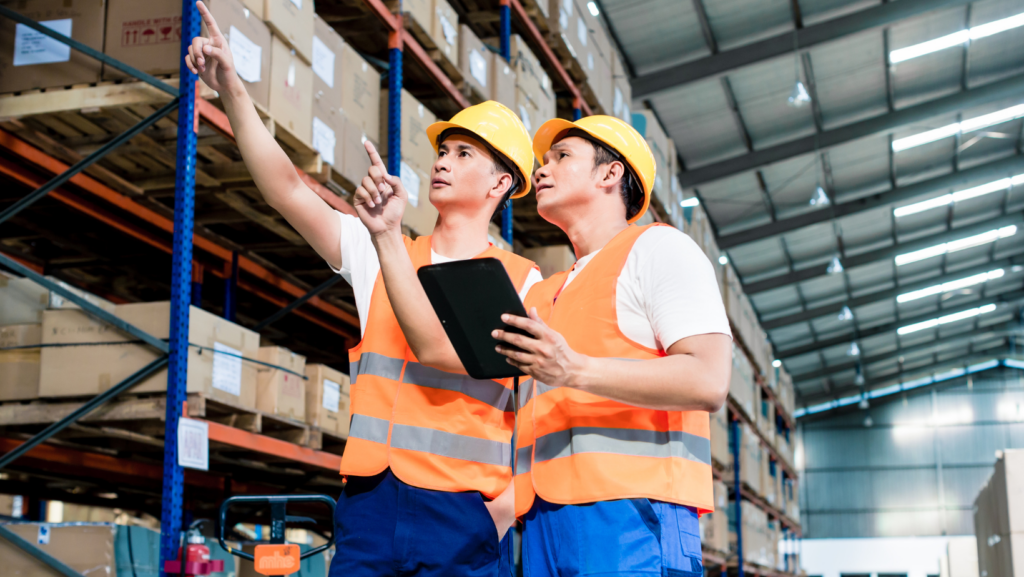In the bustling world of commerce, DC logistics stands as a vital cog in the machinery of supply chain management. It’s the lifeline that ensures the smooth transition of goods from warehouses to consumers’ doorsteps. But what exactly does it entail and why is it so crucial in today’s fast-paced market?
This article delves into the intricacies of DC logistics, shedding light on its role, importance, and the challenges it faces. It’s a fascinating journey that takes us behind the scenes of the retail industry, unraveling the threads that connect producers, distributors, and consumers. So, whether you’re a business owner, a logistics professional, or just a curious reader, strap in for an enlightening exploration of DC logistics.
DC Logistics

This segment delves into the historical progression of Distribution Center (DC) logistics, exploring its early practices, and tracing its advancement with the integration of technology.
Distribution Centers (DCs) emerged as key components in supply chain management during the industrial revolution. In the beginning, tasks in these centers involved the simple storing and dispatching of goods. Employees manually picked items from shelves, packed them, loaded them onto trucks, and documented each process with paperwork. Primitive as these systems were, they marked the foundational procedures that would lay the groundwork for more advanced systems.
Current Trends in DC Logistics
Emerging trends in DC logistics echo the industry’s relentless drive for technological innovation and sustainability. The focus is on enhancing operational efficiency and reducing the environmental impact.
Automation and Robotics
Advancements in technology have ushered in an era of automation and robotics in DC logistics. These tools revolutionize the operational ethos of these establishments, fostering faster and more efficient workflows. Robotics, for instance, excels in tasks such as picking, packing, and sorting. Collaborative robots, or ‘cobots’, work side-by-side with human operatives, enhancing accuracy and efficiency while reducing the scope for error. Automated guided vehicles (AGVs) and autonomous mobile robots (AMRs) aid in material handling, substantially reducing the labor-cost and time.
Sustainability Initiatives

Sustainability is the second major trend in DC logistics, resonating from growing global consciousness on environmental conservation. DCs are increasingly adopting energy-efficient infrastructures like solar-powered warehouses and biofuel trucks. Companies use recyclable packaging materials, minimizing the dependency on single-use plastics, thus, shrinking their carbon footprint.
Furthermore, some warehouses implement vertical farming, growing food locally, reducing transportation-related emissions, and contributing substantially to food supply sustainability. Additional sustainability initiatives include waste management strategies and strengthening ‘closed-loop supply chains’, wherein companies reuse, recycle, or refurbish their products.
The Future of DC Logistics
Progress in DC logistics unfolds as innovation sparks. This section delves deeper into emerging technological trends that revolutionize the landscape of DC logistics.
Predictive Analytics and AI

Expected to become integral to the future of DC logistics, predictive analytics, coupled with AI technology, suggests profound transformations in the way goods move. Predictive analytics, through the power of AI, enables DC logistics to anticipate changes, thereby making proactive and informed decisions.
Applying predictive analytics mitigates supply chain disruptions. Emerging technologies facilitate early identification of potential issues like machine malfunctions or delivery delays. For instance, AI-driven predictive analytics aid in identifying patterns in data, allowing for timely equipment maintenance, mitigating unexpected downtime. These technologies thus underpin cost savings, an optimized supply chain, and enhanced efficiency.
The Role of IoT in Enhancing Efficiency
Internet-connected devices, under the banner of IoT, play a significant function in enhancing DC logistics’ efficiency. Device interconnectivity and data exchange render real-time insights, leading to sophisticated inventory management and streamlined processes.
IoT powered sensors, for example, provide instant updates on the location and condition of goods. This transparency strengthens communication, enables precise inventory control, and reduces instances of lost or damaged goods.
Intricacies of DC Logistics
DC logistics has come a long way from its humble beginnings, now standing as a testament to technological innovation and sustainability in supply chain management. The integration of advanced tech like robotics, AI, and machine learning has transformed operations, driving efficiency and sustainability. Yet, it’s not without its challenges.

